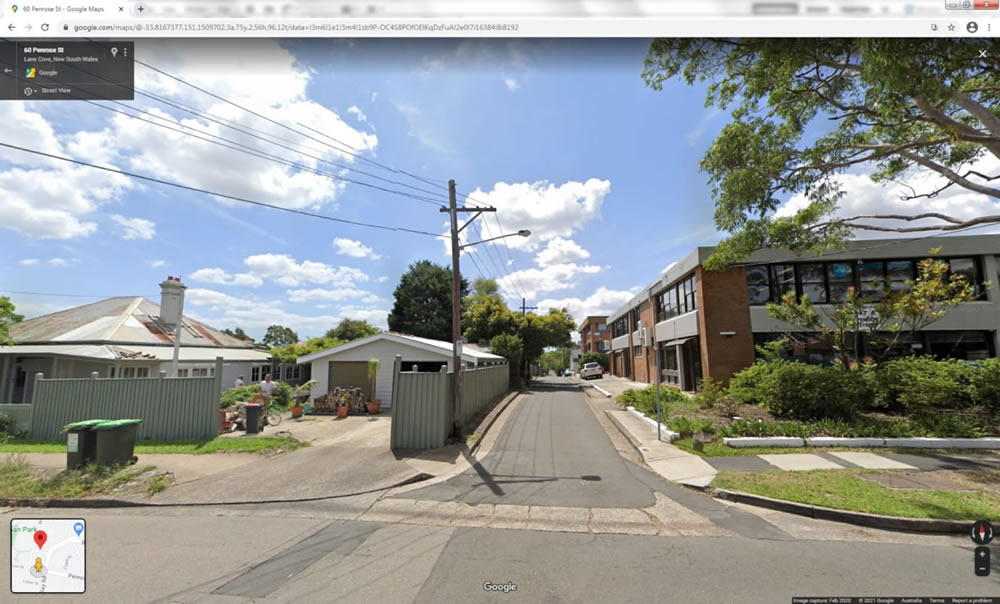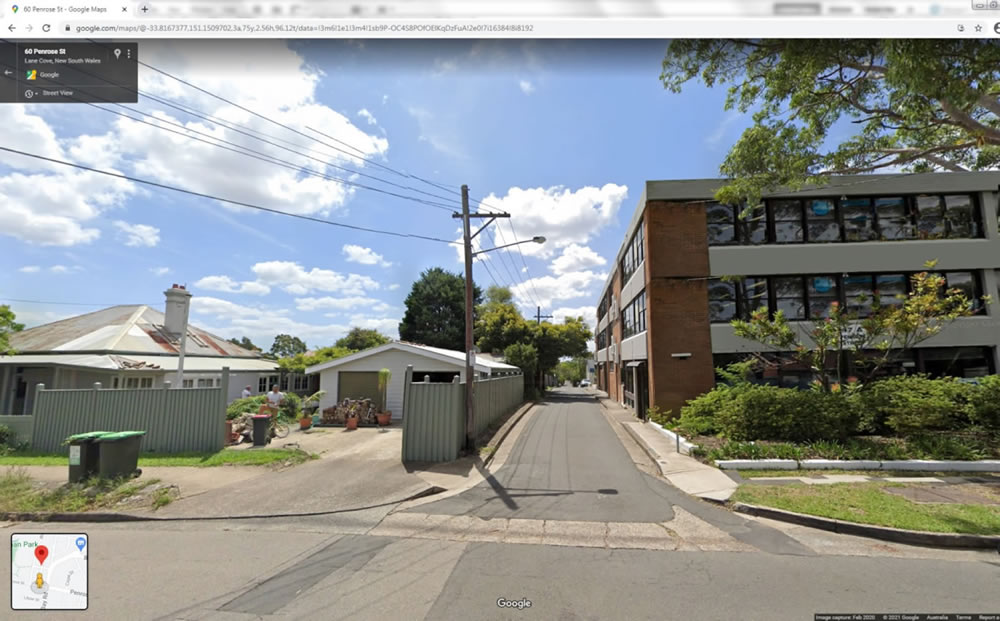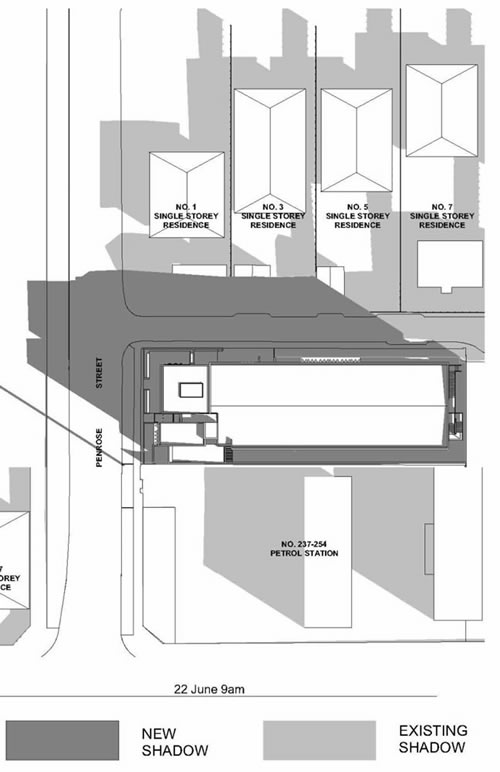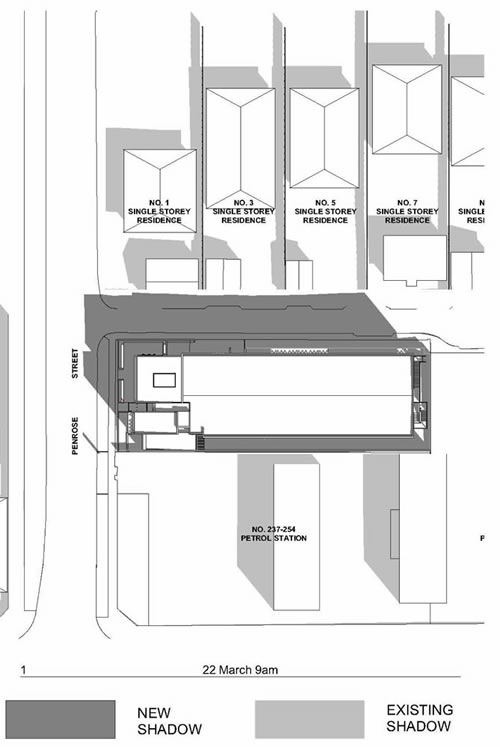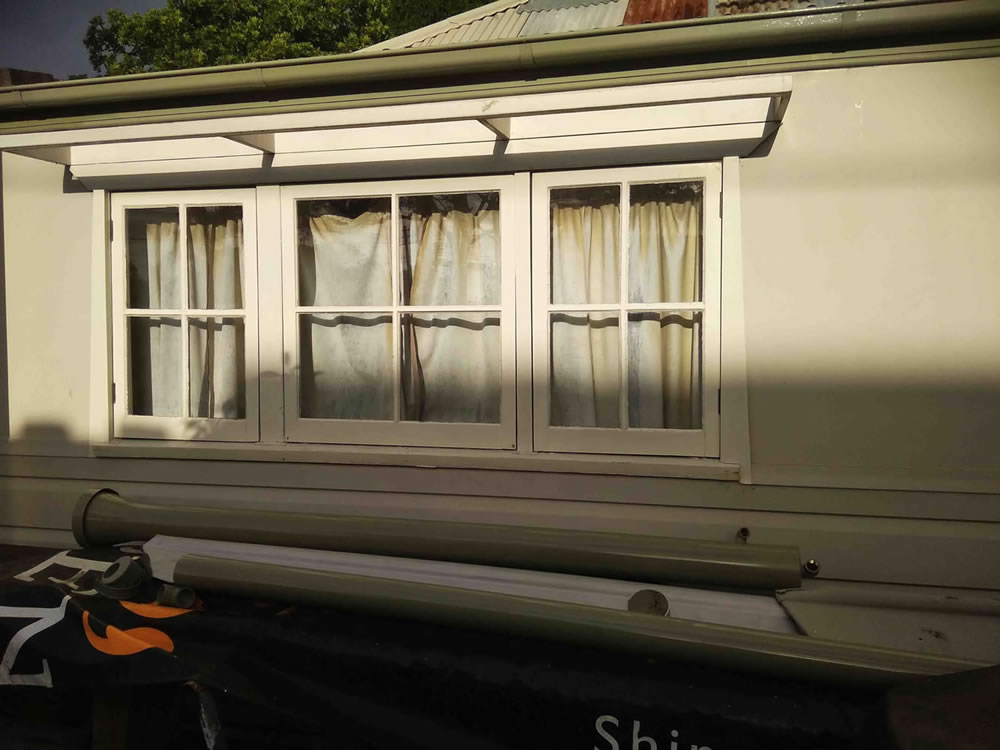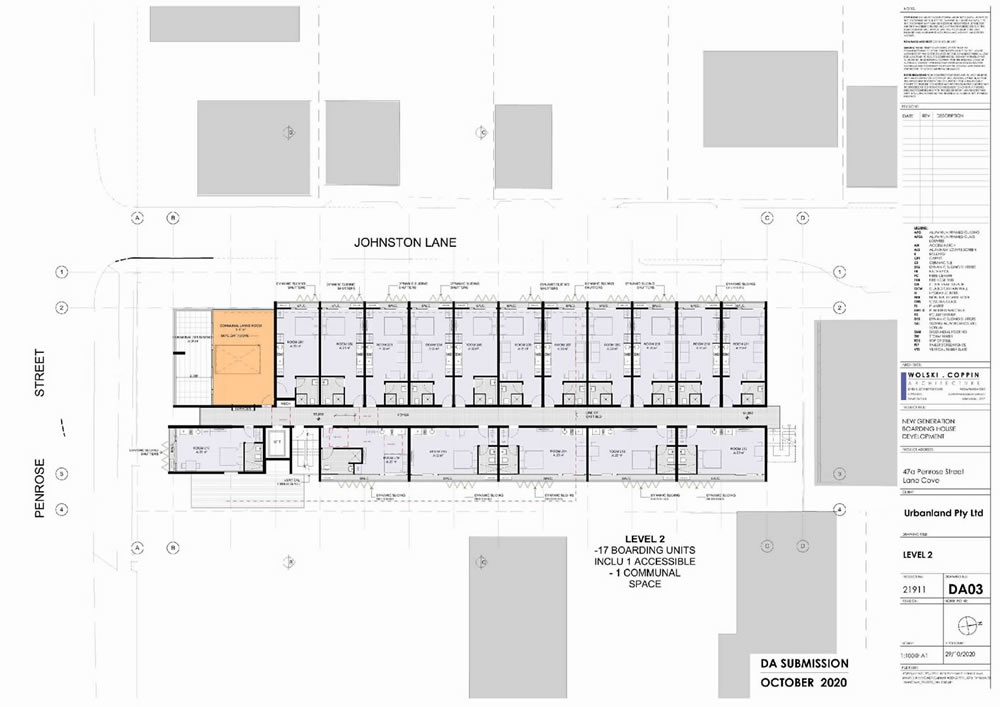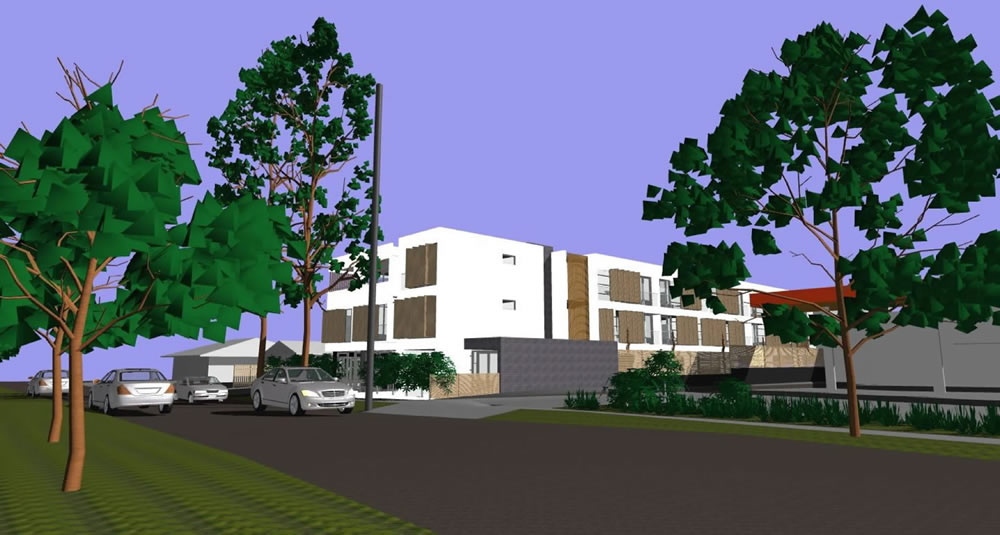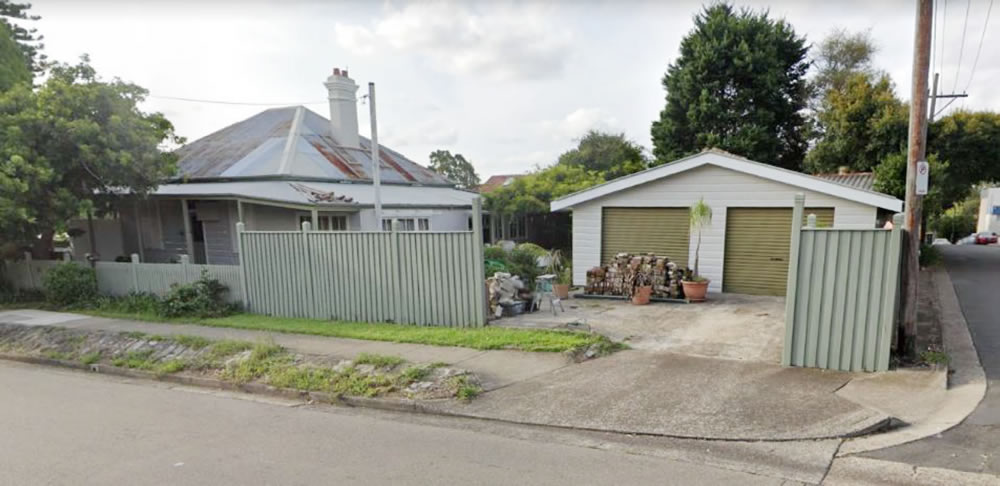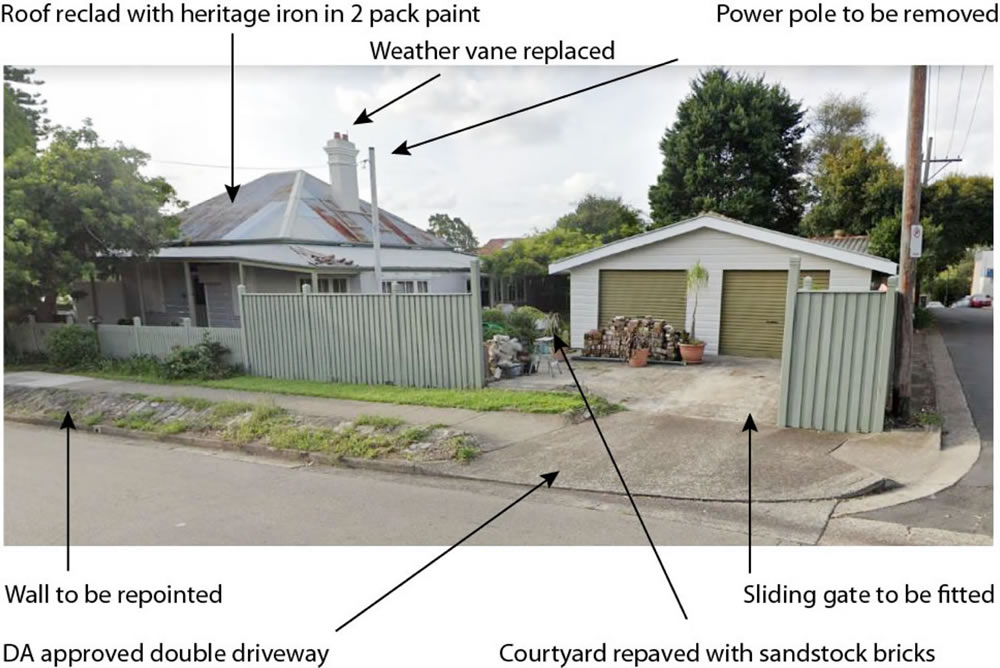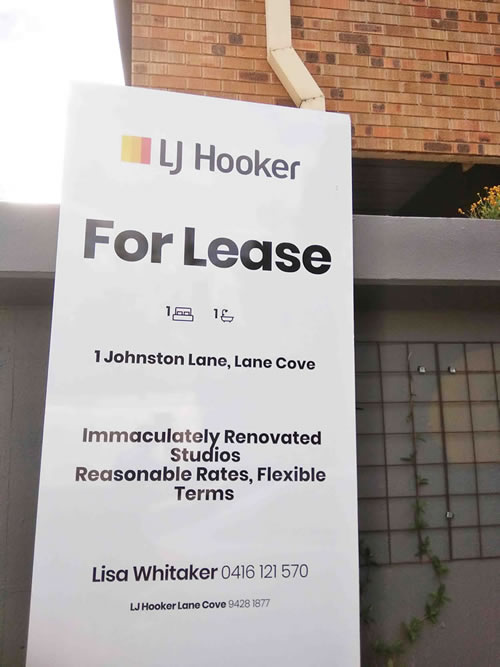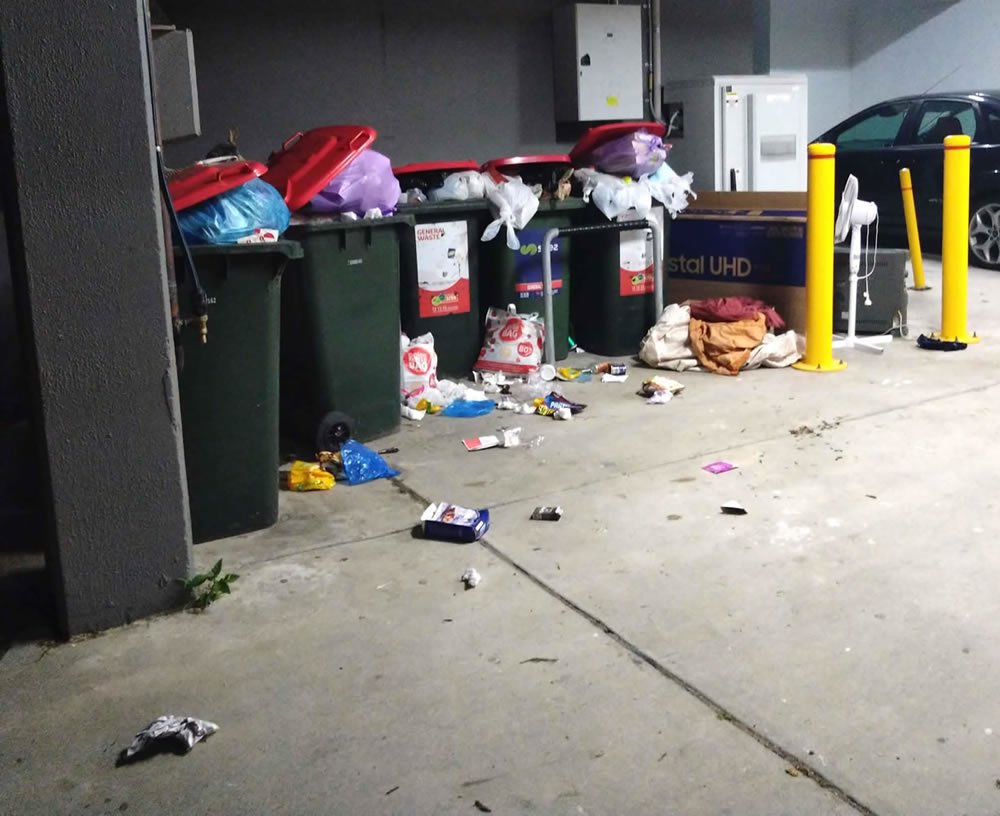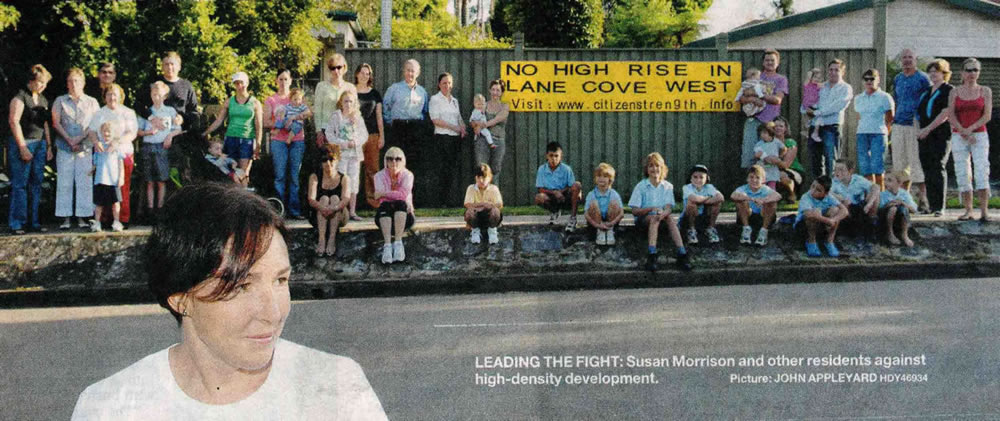Prelude
This detailed submission concentrates on matters unlikely to be raised by other residents. That does not lessen concerns on those matters, but time limitations preclude doing otherwise.
Most of these new matters discussed bear on history, lessons learnt and are otherwise important in decisions regarding 47A Penrose Street, Lane Cove West.
The body of Evidence also considers some of the causes of needing low-income housing and seeks solutions.
Eligibility to Comment
This submission is by Ann and John Colyer, from 1 Wood Street, Lane Cove West, the closest property to and overlooked by the proposed redevelopment of 47A Penrose Street.
John has lived in Lane Cove Municipality for all of his life, including a period decades ago at 52 Wood Street, and now owning four properties in Lane Cove, we are much aware of the community history and issues relating to the environs of 47A Penrose Street.
In particular, we have had very close connection with a property developer who had considered the purchase and redevelopment of 47A Penrose Street, by adding another level to the existing building.
John and Ann Colyer are uniquely connected to the site by location and experience.
Heritage Property
The development application includes a Statement of Environment Effects. Item 5.10 Heritage Considerations falsely states “The subject is not a listed heritage item, is not located within a heritage conservation area and is not located in the vicinity of any heritage item".
The Oaks
No. 1 Wood Street
Lane Cove West NSW 2066
has a Lane Cove Council heritage listing
Council printout (see Appendix A)
Under the guidance of Heritage Building Consultant Donna Leslie, The Oaks is being extensively restored, including the replacement of deficient, out of period or out of character past building works.
Restoration has been over an extended period, interrupted by Covid-19, but recommencing following Council’s recent approval of a Development Application for the next stage.
The nature and detail of the restoration is extraordinary (partially detailed in appendix A). All lead paint has been removed, along with asbestos.
Heritage integrity has been mandated to the extent of taking two years and tens of thousands of Architects dollars, just to redesign a totally compliant swimming pool enclosure that is totally safe yet does not impose on the heritage ambience of the property.
The remaining restoration will maintain heritage integrity, physically solid with aged patina and able to last another hundred years and more.
The Oaks is positioned on the high relatively flat end of Wood Street, on the corner of Penrose Street, bounded on the other side by Johnston Lane. In this prime position, when the restoration is completed, it will be a show piece of which we and the Lane Cove community can be very proud.
Then just across the Johnston Laneway, only one car wide in this position, the developers propose to build a boarding house, effectively to our boundary. By bulk and height, it will destroy the ambience of what we are taking years and hundreds of thousands of dollars to create.
47A Penrose Street is elevated above the roadway with the land falling away slightly in all but the garage side (north). Viewed from Penrose Street (south side), the existing two-story building appears to be the same height as the adjoining three level property in Johnston Lane, or even higher.
This elevation accentuates the height and bulk of the building.
With the submission drawings there is a picture labelled “Camera 4pm from above – 22 June” This view is from above, which compresses the height; viewed from below at street level accentuates the height.
The proposed development of three stories would therefore present an obtrusive bulk, more like a four-story building and would be incompatible with our Heritage Listed cottage.
If heritage means anything to Council, or any court in the land, then 47A Penrose Street boarding house development must be rejected.
Local History
Our first home, 52 Wood Street, backed onto the local dump and Mars Road was the only entry to the industrial estate. Lane Cove West was the “wrong end of town”.
Then the dump and Mars Road were closed and rebirth as a family friendly village started, with no through traffic, local school, Blackman Park and bushland. Properties were extended or rebuilt and real estate values rose. More recently Blackman Park was upgraded to an all- weather sportsground and became much used by the wider community. Now there is a traffic and parking problem in Wood Street, particularly on the weekend.
Weekday morning and afternoons there is gridlock with “helicopter” children at the local school.
Then no. 1 Johnston Lane became a boarding house.
The West, Lane Cove West, pocket is now a victim of its own success and further development will destroy the child centred family values and amenities that built that success.
High-Density Low-Cost Housing (Not Best Practice)
Attempts by authorities to address low-cost housing are not a manifestation of today’s circumstances. For decades, now even centuries, the need has been “real and present”.
Over that time, it has been proven that congregating low-cost accommodation in one location does not work. Historically, concentration of low-income earners causes social problems and the attempts to manage the circumstances and residents typically fail. Examples abound, but history needs to be explored or the messages are quickly forgotten and lost.
One example is the high-rise flats at Missenden Road, Camperdown, with which we had some connection. There were a number of tower blocks for low cost or “social housing” and there were problems.
If consolidating low-cost housing was such a good idea then these towers would have been the model for many more. But the towers were demolished!
Likewise, consolidating social housing in Redfern was unsuccessful.
One smaller consolidation in Redfern which our business has connection was “The Block” (we installed harm mineralization free-vend products). The Block was a “no go” area, for all public persons. The Block was demolished.
Well over a hundred years ago bubonic plague came to Australia and centred on residents in The Rocks area, resolved by demolishing those consolidated houses.
Experiences with urban consolidation is worldwide.
In 1994 our business had a long-term contract in Sheffield, England and we rented premises at 4 Andover Street, Sheffield S39EG, then a police no-go area. In 1998 we (not the business) purchased the building and over the years have worked with Authorities to address the serious issues, which included serious tenant damage to the property. Some local buildings have been demolished, creating open space and by adding parkland and trees the area has been transformed.
A Better Way
History clearly tells us that consolidation of low-cost housing is not best practice. Dispersing low-cost housing, spread throughout the community, has been proven most effective (current practice until now).
If that process has been compromised by inadequate application or rental overcharge, then find ways to address those problems, do not revert to proven failed practices.
Another way of spreading low-cost housing through the community is to allow or encourage more share houses. This is common with students, but not the wider community. Perhaps it should be.
Or the old concept of renting a room in someone’s house. When first married we rented a garden flat in a suburban house, the converted sun veranda.
Air B & B may not be the answer, but investigate what is possible. Investigate anything that spreads the low-income earners throughout the community, do not build boarding houses.
Urban Consolidation
Examples of overcrowding cities around the world ought to compel Australian and State Governments to decentralize. The attractions that are Sydney are being destroyed by rampant uncoordinated development.
If consolidation must occur it should be in largely self-contained high-rise villages that don’t affect other people. For this there are some but few examples. Sometimes area renewal is justified and needed, but the test is whether this enhances and benefits all concerned. On this test the boarding house redevelopment of 47A Penrose Street Lane Cove West fails.
“In fill” development that impacts adjoining property owners is allowing capitalism to supplant integrated town planning.
Risk Projection
West, West Lane Cove bounded by a bend in the Lane Cove river and Burns Bay Road and Centennial Avenue is an isolated pocket, currently a low-density residential area.
History and common sense tell that pockets of land tend to have a singular purpose, being too small for multi-purpose use.
Lane Cove West used to be an industrial area. Then divided by the closing of Wood Street dump and the closure of Mars Road into Wood Street.
This created two singular purpose land “pockets”, the separate industrial estate and the residential area that is now under threat.
This residential pocket has re-developed with renovated or new homes. That especially prized residential status needs to be maintained and nurtured, or there will be change again.
Logic tells us that if the status of valued and valuable low-density real estate is eroded from the edges, then the adjoining properties become less looked after and less valued. Then the area becomes at risk of becoming a sacrificial pocket for re-development.
With mounting pressure to house low-income families, West Lane Cove could become the sacrificial space for extra high-density residential high-rise. The logic would be to create mass high-rise residences and preserve and protect what is left of Lane Cove from mixed development.
Fanciful? Think again.
The Helen Street area was once low density residential and became medium density home units, thankfully with substantial set back and has maintained a green neighbourhood.
Now, Mowbray Road has been “bulldozed” into a high rise residential with negligible set back and “green has gone”.
Knocking on our doorstep is the new development on Burns Bay Road (built on land gifted by Ludiwici in perpetuity for public use).
Is Lane Cove West next?
It appears probable, unless residents rally and stay rallied to protect this pocket of low-density residential housing. Protection requires;
- Stopping any high rise, or other similar development from encroaching any further into the area (and that includes grandstands or other similar improvements to Blackman Park, great as the place may be).
- Giving every support and encouragement to Lane Cove Council, to resist Federal, State or developer’s pressure to further populate Lane Cove West.
- Rejecting the boarding house re-development of 47A Penrose Street.
Boarding House or Studio Apartments
We are confused.
When the 1 Johnston Lane boarding house Development Application was debated, we commented that they looked like studio apartments, not like a boarding house as we knew them. Not so, we were told, and yes apartments are not allowed under the zoning restrictions.
- So, if they are boarding house rooms, why are they now being classified as apartments?
- And if they are apartments, is not that not in convention of the zoning?
- If 1 Johnston Lane rooms are apartments, shouldn’t the proposed rooms at 47A Penrose street be apartments as well.
- And if 47A proposed rooms are apartments is not this in contravention of the zoning?
Further confusion surrounds whether, at some future date 1 Johnston Lane and then 47A Penrose Street apply for a zoning change to allow apartments and whether these can become a Strata Plan and sold on the open market.
Such zoning changes or change of use will have precedence, example the Shore Motel on the Pacific Highway became studio apartments.
Clarity as to the legal definition of boarding houses, studio apartments, applicable zoning regulations and ease of further change to any related aspect need to accompany this Development Application.
That clarity remains absent.
Profit or Amenity
When the Ampol garage (adjoining 47A Penrose Street, Lane Cove West) was redeveloped the local community lost;
- A motor mechanic
- A car wash facility
- A Utility Hire Service
With the proposed development the existing community-based business of Yoga, Dance and Music classes will be lost, if for no other reason than they cannot be supported by just one car parking space in the proposed redeveloped commercial space. Therefore, any new commercial activity is likely to be office-based administration, rather than community serving.
There is therefore a direct linkage between corporate profit and community services.
Redevelopment of the garage and the proposed boarding house will lose six community support services, for a gain of what? Increased profits for their owners and some “feel good” factor that society is doing something for the low-income of the community.
By zoning and control of Development Applications Councils and Governments have a responsibility to ensure the local community is best served, not achieved with the proposed 47A Penrose Street boarding house.
Symptom or Cure (to low incomes)
Whenever there is a problem the reaction is to address the symptoms of the problem, when stepping back and analysing the circumstances may suggest a better solution is to address the cause of the problem. This is clearly the case with needing low-cost housing.
Clearly there is a widening gap between the rich and the low-income earners. Why this occurs has not been adequately addressed and now only some factors are for consideration.
Some of society at the top end are overpaid and shareholders or other interested parties need to control this abuse. Even the professions are disproportionately paid relative to the trades (and professionals generally don’t guarantee their work, but by law tradesman do).
At the other end of the pay scale the number of persons living off welfare is way too high. We have known of a great number of persons receiving welfare under false pretences. Related to low-cost housing, we have known of families on social or rent assisted government housing that held down well-paid jobs. Clearly the Governmental assessment process has consistently failed community expectation.
The number of persons lacking vocational training is also way too high.
Education
One reasons for so many low paid employees is the failure of the education system, principally vocational training. Decades ago, TAFE and the apprenticeship scheme were effectively destroyed, first by free University, then closure of Government run organisations previously employing large numbers of apprentices. Then globalisation meant Australia competed with the world’s labour market, an impossible objective, but the actual result was cheap (and junk- standard) imports, resulting in the destruction of the Australian manufacturing sector. Prior to that we lost the clothing and footwear industries. These industries gave stable employment for lower skilled persons.
Even with a destroyed manufacturing sector Australia has had a skills shortage for decades. Manufacturers (like our own business) have been unable to find qualified capable staff and have been forced to use laborers for tradesmen’s duties. The results have been poor quality production and low productivity. Profits were commensurably reduced and ultimately wages were reduced. At the same time the much-expanded University graduates had academic but not practical skills-based education and their quality outputs were and are desperately wanting.
Australia has way too many low paid persons because the environment caused or allowed them to fall behind.
Some Answers
Control salary abuse
Fix the education system
Fix TAFE
Promote apprenticeships
Fix vocational training Revalue University education Promote / Buy Australia
Fix welfare fraud
Zoning Distortions
In 2008 there was a major ratepayer review of rezoning possibilities in Lane Cove, including zoning for five-story flats in Wood Street, from Penrose Street to Cullen Street. Outrage by the public was loud and clear (see Appendix C).
What wasn’t known then was that boarding houses were allowed under the zoning applying to the adjoining commercial activities in Burns Bay Road, Penrose to Cullen Street.
Had that been known the public submissions would have included an attempt to have boarding houses removed from that zoning possibility.
Now, stuck with the reality that boarding houses are allowed, it is still obvious that they are not wanted, and we contend there are better solutions.
In 2008 rate payers made their objection to consolidating low-cost housing well known.
That objection remains.
Parking Concerns
The boarding house parking submission is seriously flawed, presumably detailed by other objectors. But just a quick oversight. The proposed commercial premises allow one car space.
The existing premises provides twenty-one spaces.
On that statistic alone there will be nearly twenty commercial-use cars expected to use street parking. Experience with 1 Johnstone Lane boarding house is that at least six residential vehicles regularly street park. Evidence suggests the number is greater.
1 Johnstone Lane has twenty-one rooms, the proposed development has forty-four.
On these statistics alone there will be an extra twelve residential cars street parking.
- Combining commercial and residential car parking suggest there is a theoretical potential for thirty-two vehicles destined to street park.
- Existing shop keepers of the area already park in Penrose or Wood Street during their business hours.
These streets do not have the capacity to absorb any more cars.
Consequences
The shopping centre car park will be used for residential parking, which will negatively impact their community based commercial trade.
There will be pressure to widen Wood Street to accommodate extra parking, with the loss of many mature trees and much amenity.
Illegal parking on nature strips and footpaths will be widespread.
Some town planners advocate (and practice) restrictive vehicle parking as a means of forcing reduced car ownership and whilst that may have merit for city parking and perhaps trainline areas, it is not appropriate for a low-density residential area.
Rubbish Collection
The plans indicate a rubbish room for sixteen x 240 litre bins, but there is no suggestion of where or how this rubbish is to be collected. Presumably they will be lined up on the footpath on Johnston Lane, which for the length of the boarding house building is a single car width. This would oblige pedestrians on walk on the roadway, often with young children or with babies in prams.
The safety issue is obvious.
Public Health
With the area adjoining bushland, residents sometimes (and sometimes frequently) experience visits from Possums, Brush Turkeys, Bush Rats and birds, particularly Crows. In this near bushland settling sixteen of the largest bins invites vermin, not just Bush Rats, but the more disease spreading house rats.
To suggest that the rubbish hygiene will be dealt with by the Resident Manager is living in denial of the experience of the adjoining boarding house at 1 Johnston Lane.
Boarding House Management
At the site Courtroom meeting to approve the boarding house at 1 Johnston Lane, there were considerable promises about Residential Management control, accepted “hook line and sinker” by the Land and Environment Commission. John Colyer gave evidence at this court hearing, dismissed in the Land and Environment written discussion. No comfort in being right and whilst the issues could have been much worse, they are real and present.
Rubbish bins regularly overflow and rubbish is spread by crows. Presumably rats also invade, as there is currently rat infestation in the area.
Household goods are frequently left on the nature strip; stoves, fans, beds, mattresses etc., not as part of Council’s clean up as the mess sits there for days or weeks (see photos - appendix D)
Note:
- The laneway at 1 Johnston Lane is much wider than beside 47A Penrose St, hence rubbish disposal problems for 47A Penrose Street will be much more evident.
- The tenancy of 1 Johnston Lane includes many who appear not to be low paid persons. Hence the experience at 47A Penrose Street would be worse.
- The rubbish issue is clearly for the Resident Manager to address (and it is still not addressed).
- Not so evident is other issues like residents “Speeding” around into Johnston Lane (meeting oncoming cars and pedestrians) and through the passenger window throwing their takeaway lunch rubbish and drink containers onto our pathway. This was seen by John Colyer, who confronted the residents, but the rubbish keeps returning.
- If 1 Johnston Lane has these problems, 47A Penrose Street may have more than twice the problems.
Assessment of the need for low-cost housing
In considering this matter, first we qualify our own position, as having experienced considerable financial hardship, and at other times provided considerable and continuing benevolence to others, we are very much eligible and entitled to comment on sensitive matters.
The need for low-cost housing is generally not quantified or qualified, yet it is beholden on those promoting change to detail why there is a need. Some studies reviewed are deficient in noting cause and effect and talk of the problem without much reference as to why low-income housing in required.
Presumably proper studies have been done and presumably the reasoning is to keep lower income persons in the more affluent communities, to provide the services needed that do not pay well.
Another possibility is the casualisation of employment and sometimes reduced hours of employment. Again, address that problem, industrial relations as they are will promote casualisation.
A distinction is also needed between low-income earners that expect to always rent and others struggling to buy their first home. Boarding houses should be for the first group.
But;
- What are those jobs?
- How many?
- What constitutes low income?
- What percentage is used in the calculation?
- What constitutes a living wage?
We have an expectation that answers to these questions by some in authority would not accord with our values, or even community values.
Whilst concerned for the un-employed, basing calculations on living off un-employment benefits is no basis to calculate low-cost housing needs in Lane Cove West.
The pivotal matter is the number of low paid jobs and how many people are needed for just that number, less the number of people living with parents and assuming some are couples living together. From that the number the low-cost dwelling can be determined.
We accept that there are also full-time students, but that raises other issues. Learning whilst earning is educationally more effective (apprentices/traineeships etc.), problems exist with the education system (Hex for University, not TAFE is just one). Generally, Sydney students can “live” at home or University have on campus accommodation (and should have more).
As a general rule, if living in an area is too expensive, then move to a lower cost area. The country has considerable low-cost accommodation as well as employment opportunities. Social disruption to support workers for low-income work is fair and reasonable. However, the suspicion is that the boarding house and other low-cost housing rational is based upon other criteria. If the criteria are based to those choosing to live on welfare then the boarding house need may be over stated.
In our experience most low-income persons do not so much have an income problem, they have an expenditure problem. Yet again, we deal with the symptoms, not the problem. Education in financial literacy is near none existent.
Conclusion
DA1/2021. 47A Penrose Street Boarding House Application should be rejected as it fails to meet Community Acceptance and Boarding House accommodation is not best practice.
Signed: John M Colyer

